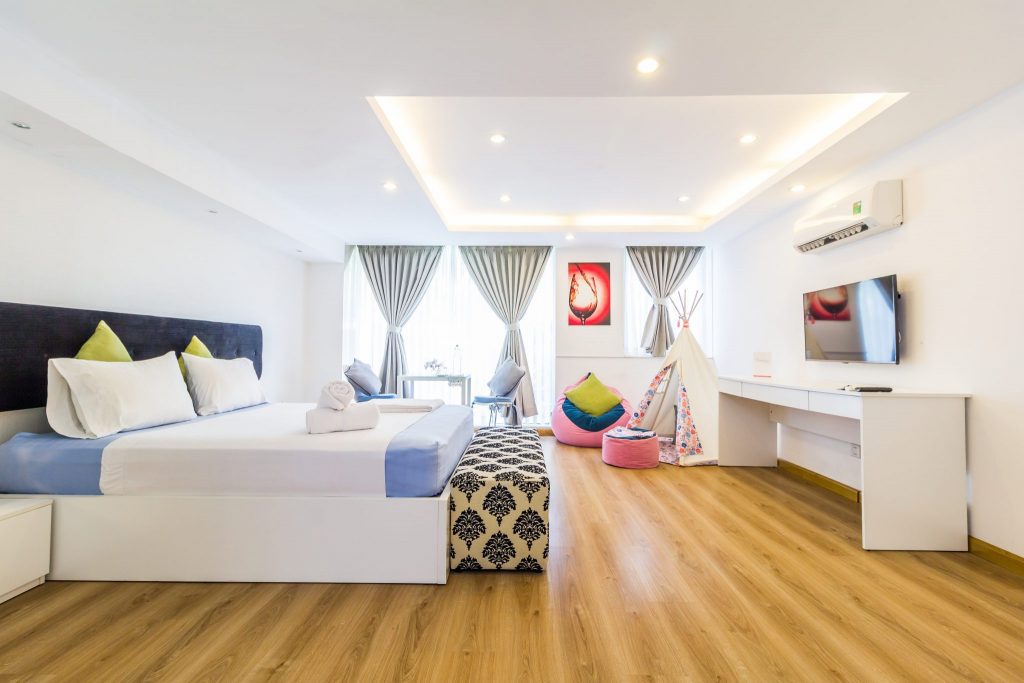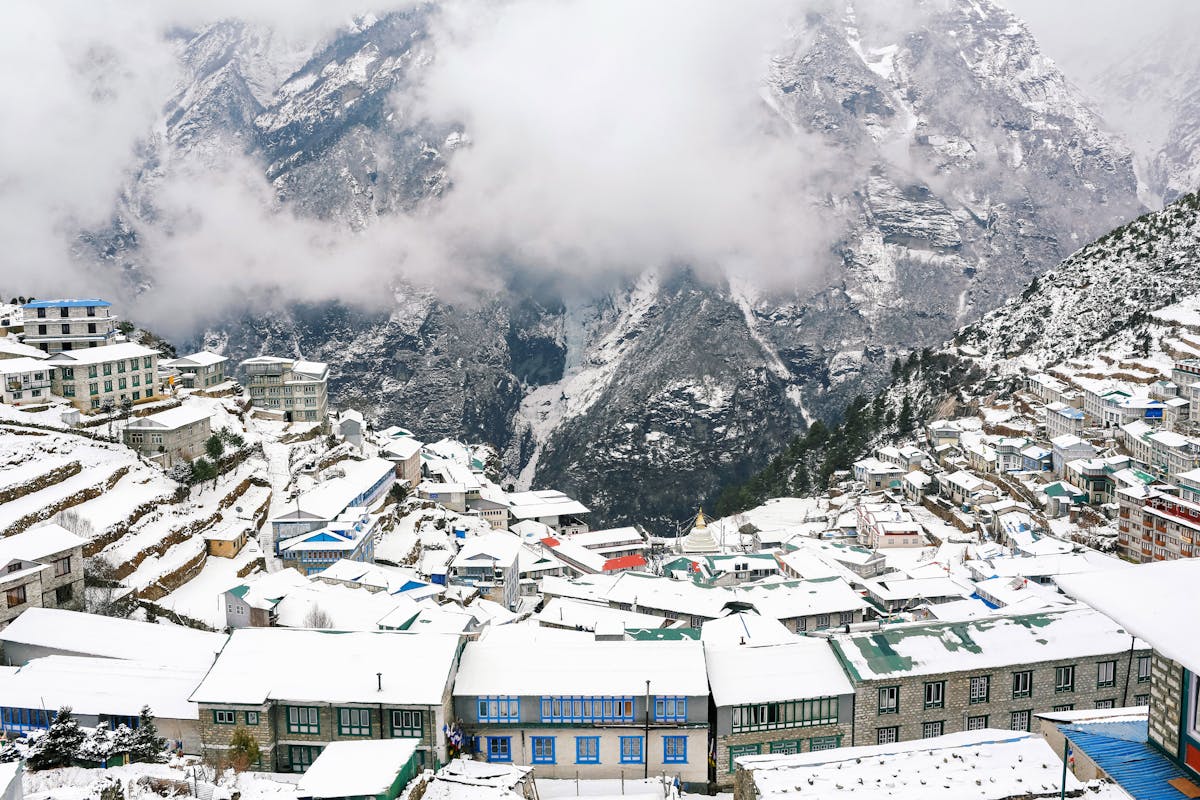Vietnam’s Homesharing Surge Creates Bargains for Travelers

Skift Take
In 2014 when he founded Christina’s, a homesharing management company in Vietnam, Thu Nguyen said the number of active listings in the country was just around 1,500.
By 2017 this had ballooned to some 33,000 listings. Now it’s about 40,000, estimates Grant Thornton Vietnam, which watches the sector closely as part of its hotel survey.
An explosive growth in listings may be good news for visitors but not for business. Home owners are already seeing yields and prices dropping by 50 percent since 2016, said Nguyen, and the slump will only get worse before it gets better as supply isn’t going to slow.
Currently entire homes have an average occupancy of 47 percent and an average daily rate of $69. For private rooms, it’s even less, at 36 percent average occupancy and $31 average daily rate, according to a new report by AirDNA.
AirDNA nevertheless maintains in the report that even with those rates, the homesharing economy is beneficial to hosts. “Even for those making the average [annual] $5,400 salary in urban areas, renting out an entire home could generate enough to live on, plus extra,” said the report.
Robust Listings
Economic prosperity has given Vietnamese the means to buy private apartments as investment. At the same time tourist arrivals keep rising strongly, prodding those with a home or a spare room to assess how they can partake in tourism’s growth.
“In the major cities many owners of residential apartments are listing their properties on Airbnb as they are able to achieve better average daily rates than long-term leases,” observed Kenneth Atkinson, executive chairman, Grant Thornton Vietnam. “There are also people or companies renting apartments to put onto Airbnb where they have multiple listings.”
Lax homestay rules make it easy for hosts to enter the market. Hosts just need to register as a household business and they can legally host travelers. Registration is “not so hard,” said Nguyen. All overnight travelers must also be registered.
According to AirDNA, single listings in Vietnam rose 69 percent to 74 percent in 2019, indicating growing numbers of first-time homesharing entrepreneurs. Places that see growth include not only popular destinations such as Ho Chi Minh City, Danang, and Hoi An but rural areas as well.
What’s also driving up listings is a stock of empty residential units from the recent sharp increase in inventory in the luxury residential market, as well as conversion of older stock/apartments in the city center for higher yields, observed Olivier Dung Do Ngoc, managing partner, Dynasty Investments, a Vietnam-based real estate developer that is developing various hospitality projects in Ho Chi Minh City and Ho Tram.
Airbnb told Skift its listings in Vietnam grew 141 percent year-over-year. Observers said Airbnb and Booking.com are the two major homesharing distribution channels in the market. Luxstay, which modeled itself after Airbnb and mainly targets the domestic market, is a worthy local distribution player.
Expedia’s HomeAway, however, is barely there when compared to Airbnb and Booking.
Judith Davidson, regional director Asia of HomeAway, said, “While the vacation rental industry in Vietnam is expanding, we will continue to see how things progress with inbound demand and take advantage of opportunities as they present themselves in the near future.”
Could Nothing Go Wrong?
Looking at inbound demand, it seems nothing could go wrong. Last year saw a 20 percent increase in arrivals to 15.5 million, coming on top of a 29 percent growth in 2017 and a 26 percent rise in 2016.
The government is aiming for 20 million foreign arrivals and 82 million domestic tourists by 2020. Tourism revenues of $35 billion by then will see the tourism industry contributing 10 percent of the country’s GDP.
But while Vietnam has a lot going for it — for example, it’s now the next Asian playground for Russians after Thailand, thanks to a rise in direct flights — future projections still hinge on unknown factors, not least of which are regional conflicts with China, its number one market.
Moreover there’s an impending 40 percent increase in hotel room supply. Grant Thornton counts a pipeline of over 40,000 keys in the three-star to five-star segments.
This will further add to listings, intensifying the competition for guests for homestay players and hotels alike. Many hotels in Vietnam are already listed on Airbnb, according to Nguyen. Christina’s operates about 400 rooms across eight cities, and not just apartments but hotels, resorts, guesthouses, and hostels too.
And the pipeline does not include noninstitutional segments such as hostels and serviced apartments, which means the total accommodation pool is actually bigger, points out Bill Barnett, managing director of C9 Hotelworks.
Close to 45 percent of the pipeline are condotels in resort destinations, said Atkinson. Many of these developments offer retail investors guarantees of nine to 10 percent returns from rentals for nine to 10 years. These have to be filled, although most likely as additional hotel room accommodations rather than homestays.
Consolidation
Nguyen expects the homesharing market to undergo a consolidation as “many hosts are losing money, jumping on the bandwagon without a backup plan for oversupply, reduced pricing, and low occupancy.”
Christina’s in fact is going slow on property acquisitions, channeling efforts instead toward fine-tuning operational efficiencies. It’s also ramping up on services other than rentals as a means to bolster yields. These integrated services include offering guests tours and activities, in-home dining, food delivery, even souvenir/gift packages that include shipping.
“There will be buildings with hundreds of thousands of rooms that will need a professional team to operate, and that’s exactly why we slowed down, in order to prepare for the massive scaling in the new future,” said Nguyen.“We expected this to happen and have prepared the ecosystem that can enhance yields in such a competitive environment.”
But Nguyen is confident the oversupply will eventually be filled, saying analysts tend to underestimate the growth of developing countries.
“We operate on the ground, and we see a shift in traveler psychology, which is a stronger predictor of growth. Vietnam has everything a traveler wants and is extremely easy to access. It’s going to be a Vietnam decade like no other; I believe we have only seen a glimpse of its transformation into a technology, tourism, and agriculture powerhouse.
“Regional conflicts can create hiccups, but they won’t stop growth completely,” he said.
Impact on Hotels
Homesharing will account for 10 to 20 percent of Vietnam’s accommodation by 2025, according to Luxstay in the AirDNA report.
Hotels won’t have that long of a gap before they feel its impact, with three stars and four stars — where many Airbnb guests typically stay — feeling it the most.
Dynasty’s Do Ngoc believes to compete, hotels must focus on differentiating themselves from homestays.
“Homestays are not for every type of travelers, so hotels that focus on service and customer experience or the ‘soft’ aspect will be able to propose a very competitive offering compared with homestays,” he said.
He noted some hotel groups are already shifting the traditional product into something that is more appealing to millennials, while others are combining hospitality with co-working spaces, thereby putting additional pressure on pure homestays to be able to differentiate and drive higher average daily rate.
“In Saigon [Ho Chi Minh City], we have seen pressure on homestay average rates with inventory increasing and limited product differentiation, whereas the top performing hotels have seen an improvement in their average rates,” Do Ngoc pointed out.
Additionally the challenge facing homestays is the lack of regulation. Atkinson said many local owners may not even bother to do the required registration, which could lead to problems for guests.
Added Do Ngoc, “Similar to ridesharing, once homesharing becomes mainstream, we would expect regulators to catch up, as they have in some cities in the U.S. and Europe, with imposing certain standards and requirements on homesharing that are not dissimilar to hotels, hence bringing down the profitability of the business and increasing the barriers of entry.”
When it’s crunch time, old tricks such as differentiation of products and services remain the weapons for homestays and hotels to compete within their sectors — or with one another.




